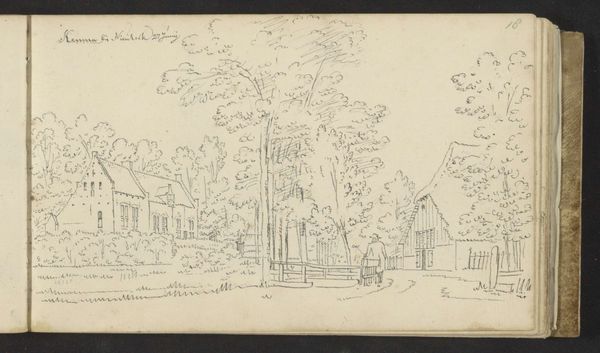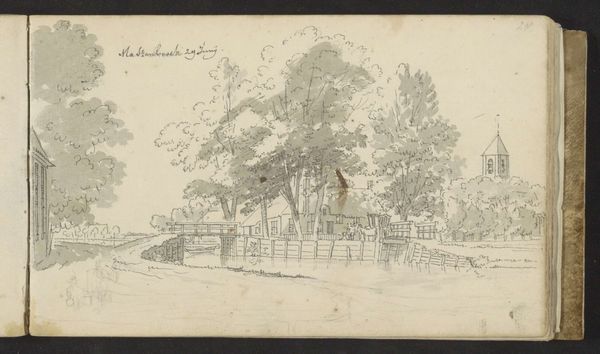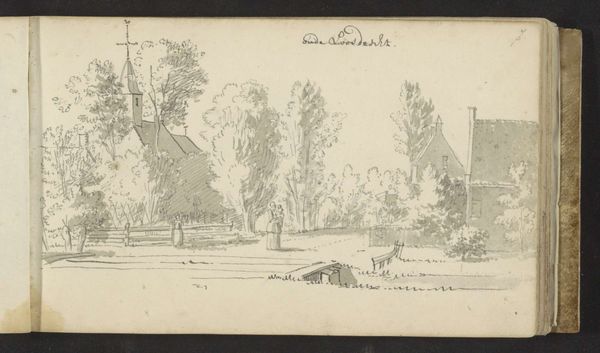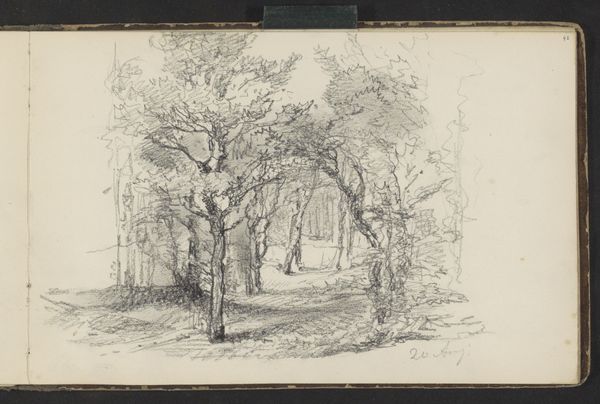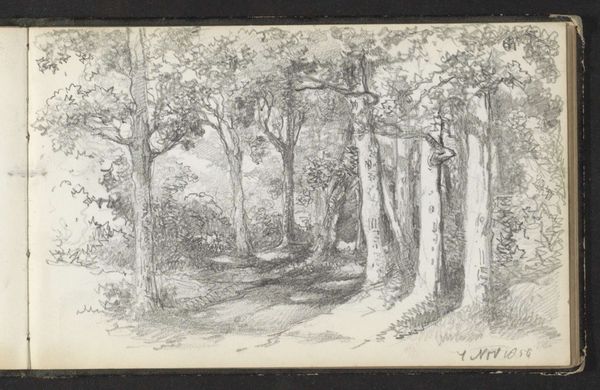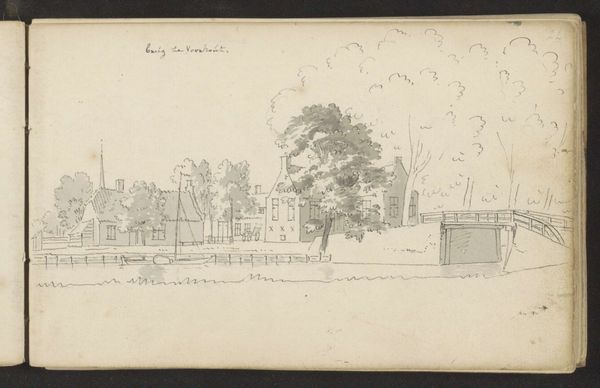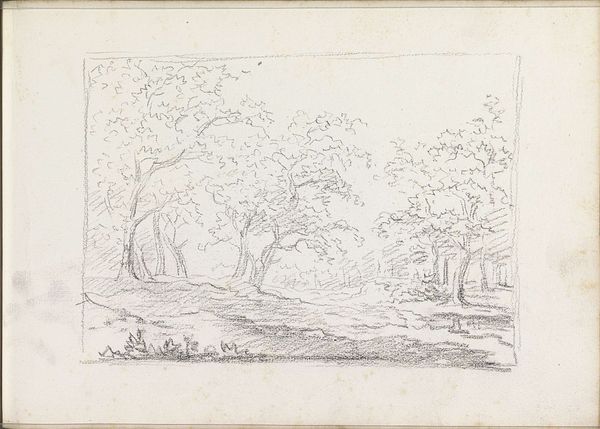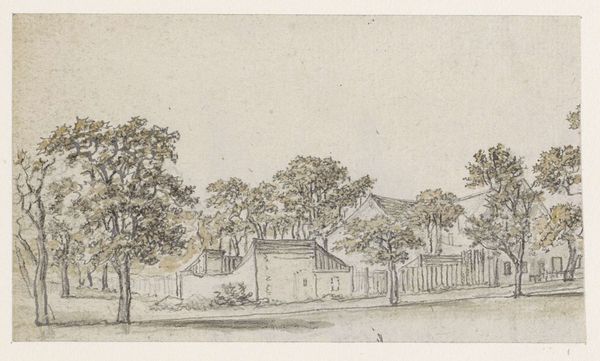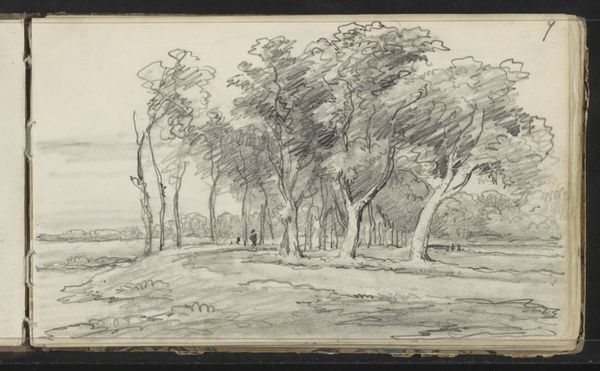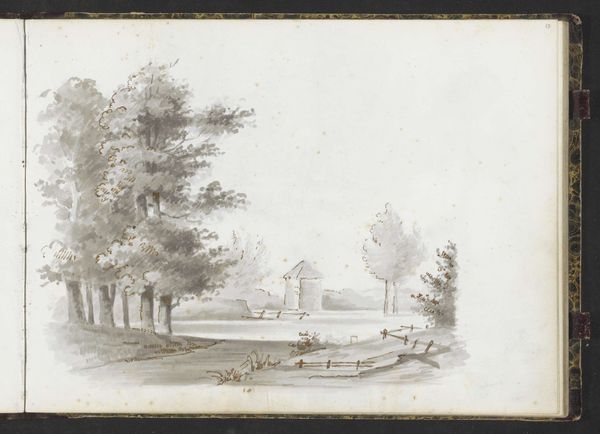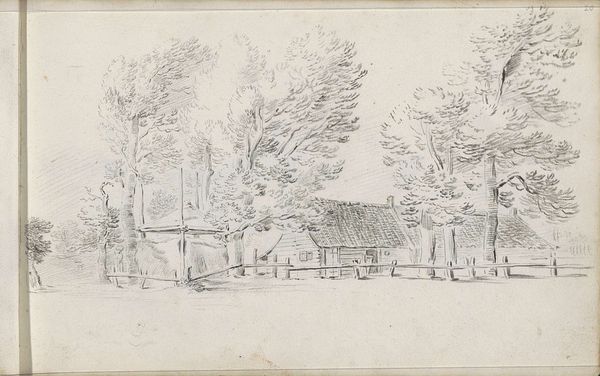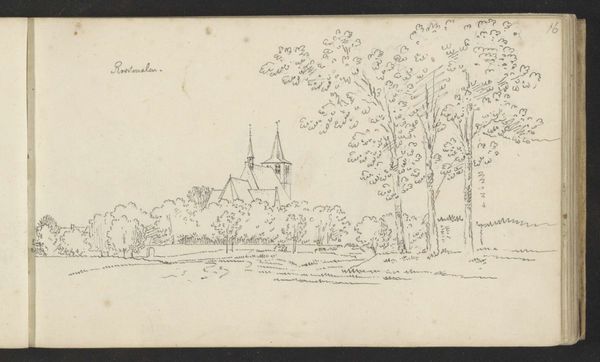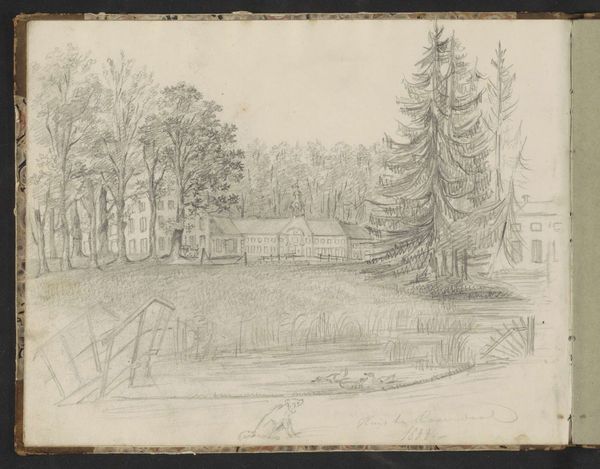
drawing, ink, pen
#
drawing
#
aged paper
#
baroque
#
dutch-golden-age
#
pen sketch
#
sketch book
#
landscape
#
personal sketchbook
#
ink
#
sketchwork
#
pen-ink sketch
#
pen work
#
sketchbook drawing
#
pen
#
cityscape
#
storyboard and sketchbook work
#
sketchbook art
#
realism
Copyright: Rijks Museum: Open Domain
Curator: Welcome. Before us is "Dorpsgezicht te 's-Graveland," a drawing executed around 1732 by Abraham de Haen the Younger, currently residing in the Rijksmuseum. It is a landscape rendering utilizing pen and ink. Editor: Immediately striking is the simplicity of the line work; it’s raw, almost like a fleeting observation captured directly from life. There's an unvarnished quality about the materials. You can almost smell the ink and feel the grain of the aged paper. Curator: Indeed, the unadorned aesthetic allows for a close examination of form and structure. The composition adheres to a discernible logic, using the trees to create strong verticals and dividing the landscape into distinct planes. Note how the linear perspective leads the eye towards a vanishing point, crafting an illusion of depth within a two-dimensional space. Editor: Absolutely, and if we focus on the ink itself, it feels like we’re witnessing the residue of artistic labor—a direct link to the artist's hand. How was the ink sourced? Was it handmade, or a commercially available product? These material questions shed light on the artistic process. Also, the sketchbook context is essential. The raw aesthetic, hinting to field sketches, removes it from "high art" canon. Curator: Interesting. From a purely structural point, consider how the contrast between light and shadow generates a certain spatial dynamism. Notice how the distribution of ink, denser in the foreground, gradually diminishes towards the background, which enhances the impression of atmospheric perspective, providing an artifice. Editor: And I’m immediately drawn to that road; the suggestion of use, and its presence shapes the scene with life and invites speculation about the people who may have used it daily—what was carried, traded, transported. I find that element of material usage especially grounding and insightful, revealing stories within the composition. Curator: That said, consider the relationship of the trees' masses to the houses along the left, suggesting elements within baroque landscape composition to reinforce the image’s pictorial unity. It serves not as pure replication, but as artistic intent of pictorial composition. Editor: Examining "Dorpsgezicht," through both the material reality of its creation and its visual arrangement truly gives insights into its historical world, blending material origins to its place in art. Curator: Indeed. A study of line and a glance into time, held by ink and paper.
Comments
No comments
Be the first to comment and join the conversation on the ultimate creative platform.
